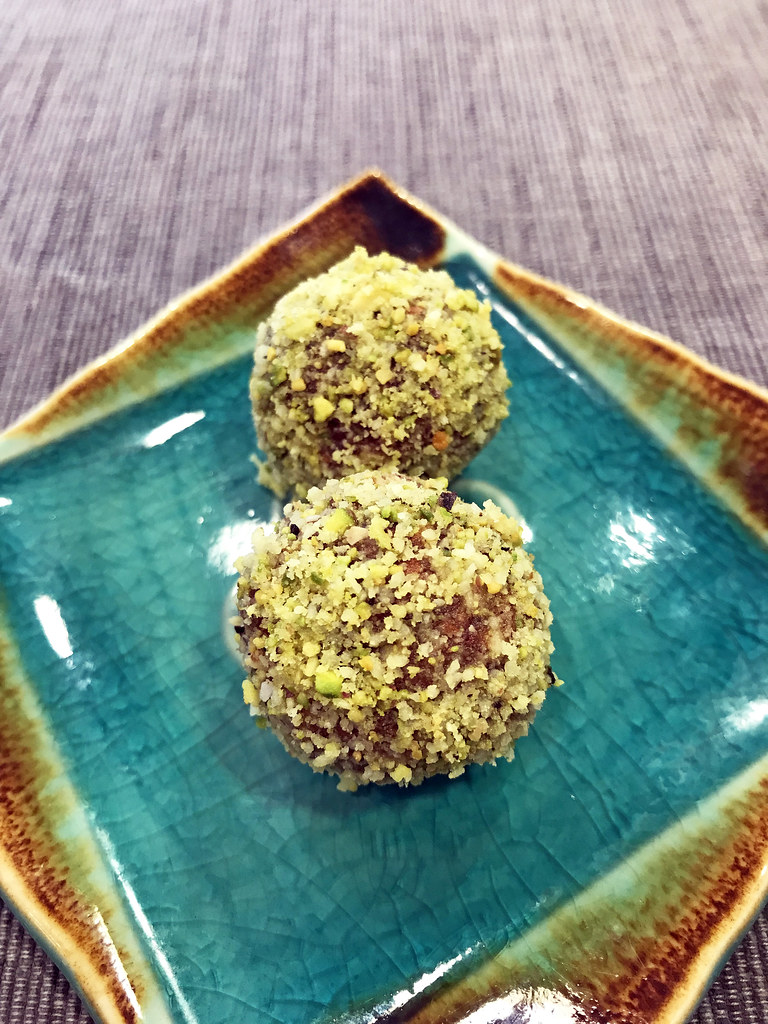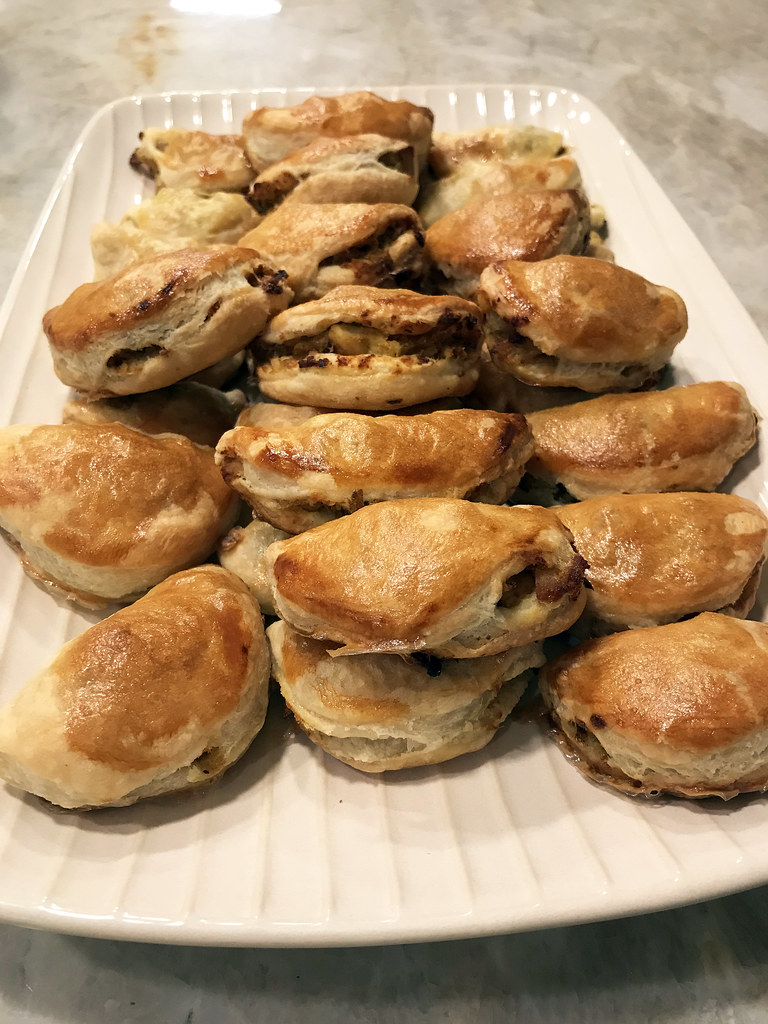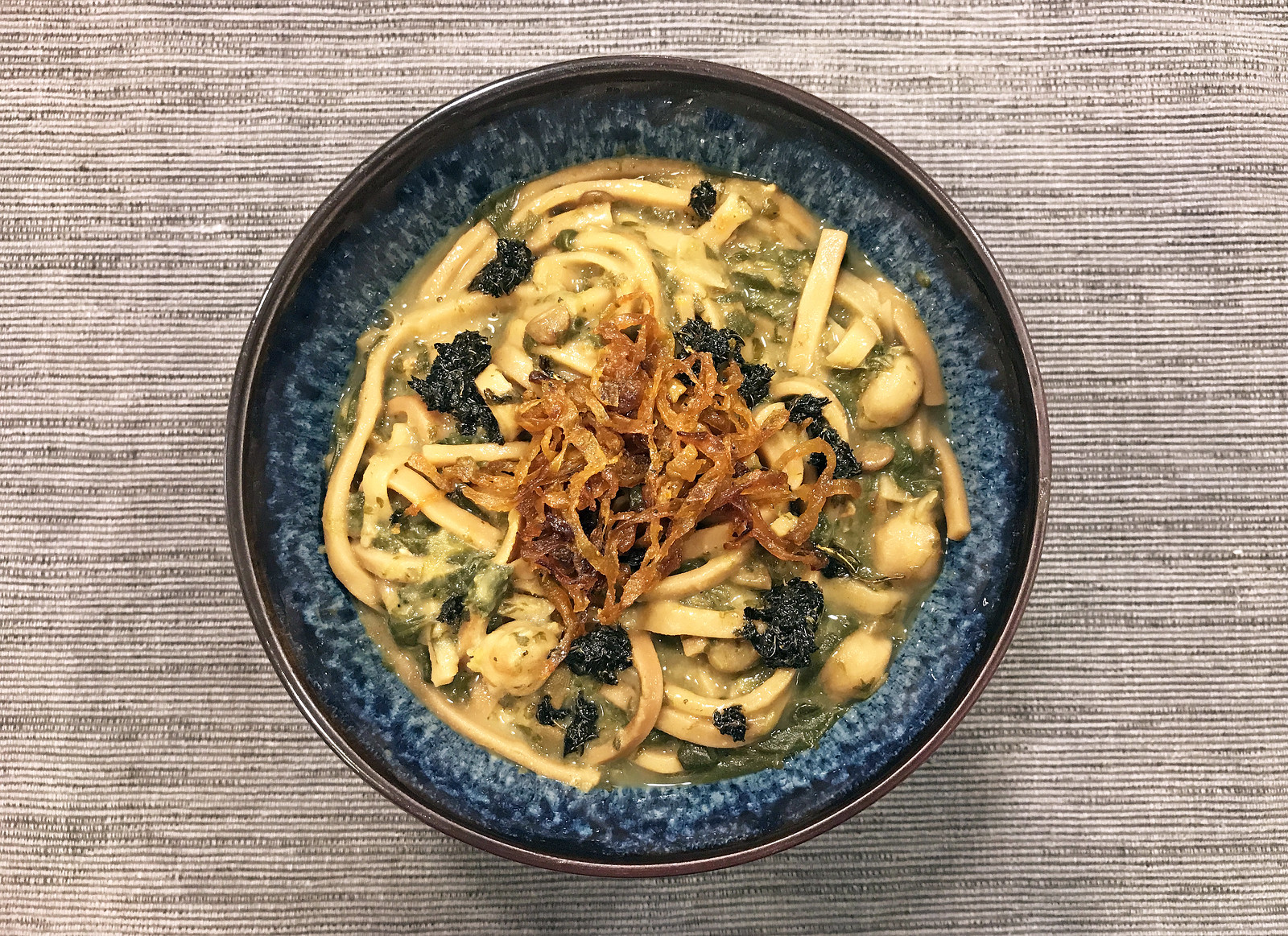We eat a lot of energy bars in our household. You know the kind: grain-free and heavy on the dates and nuts.
These Persian Gulf-style date and coconut balls are just like those protein bars you’d find at Whole Foods, but more ancient and more delicious. And they’re a breeze to make. Serve these with tea for dessert or have them for breakfast. They pack well too, making them perfect for the road.

Ingredients:
1 cup dried unsweetened coconut, ground to a coarse powder in a spice or nut grinder
2 tablespoons ground pistachios
1 tablespoon neutral oil
2 cups dates, pitted and sliced
1/2 teaspoon ground cardamom
1/4 to 1/2 teaspoon ground cinnamon
2 tablespoons tahini
1 cup raw almonds
1 cup walnuts
1 teaspoon orange blossom water
1. In a shallow bowl, mix the ground coconut and pistachios and set aside.
2. Heat the oil in a wide skillet over medium-low heat. Add the dates and saute for 4 minutes until they are soft. Add the cardamom, cinnamon, tahini, almonds, and walnuts and saute for 2 minutes.
3. Let the date mixture cool, then transfer to a food processor and pulse until you have a grainy paste.
4. Use a spoon to pick up a 1 tablespoon portion of the paste. Moisten the palms of your hands with the orange blossom water and shape into a bite-sized ball. Repeat with the remaining paste and orange blossom water.
5. Roll the date balls in the coconut mixture until they are lightly coated. Serve at room temperature or store, covered, in the refrigerator until ready to serve.




